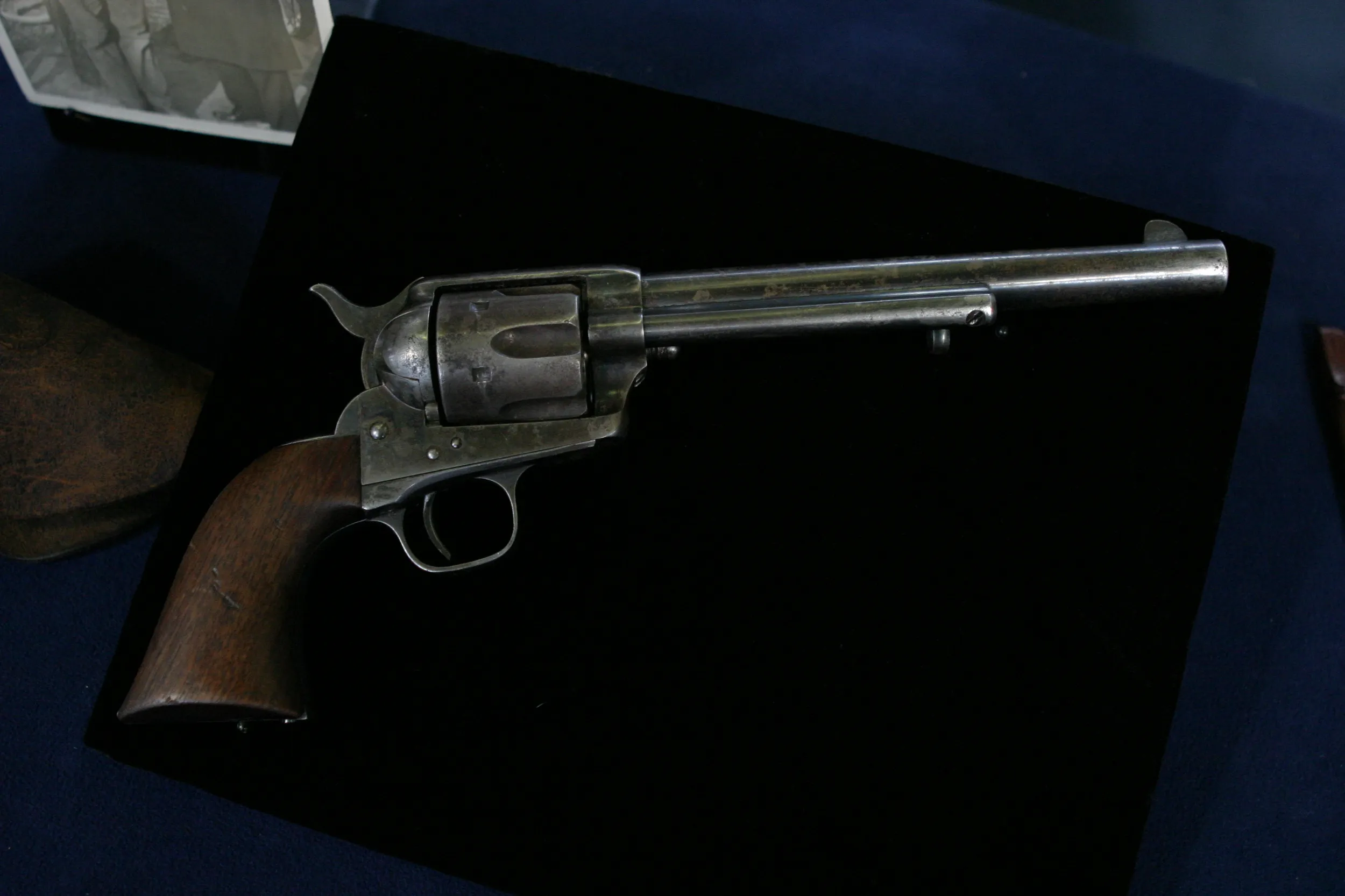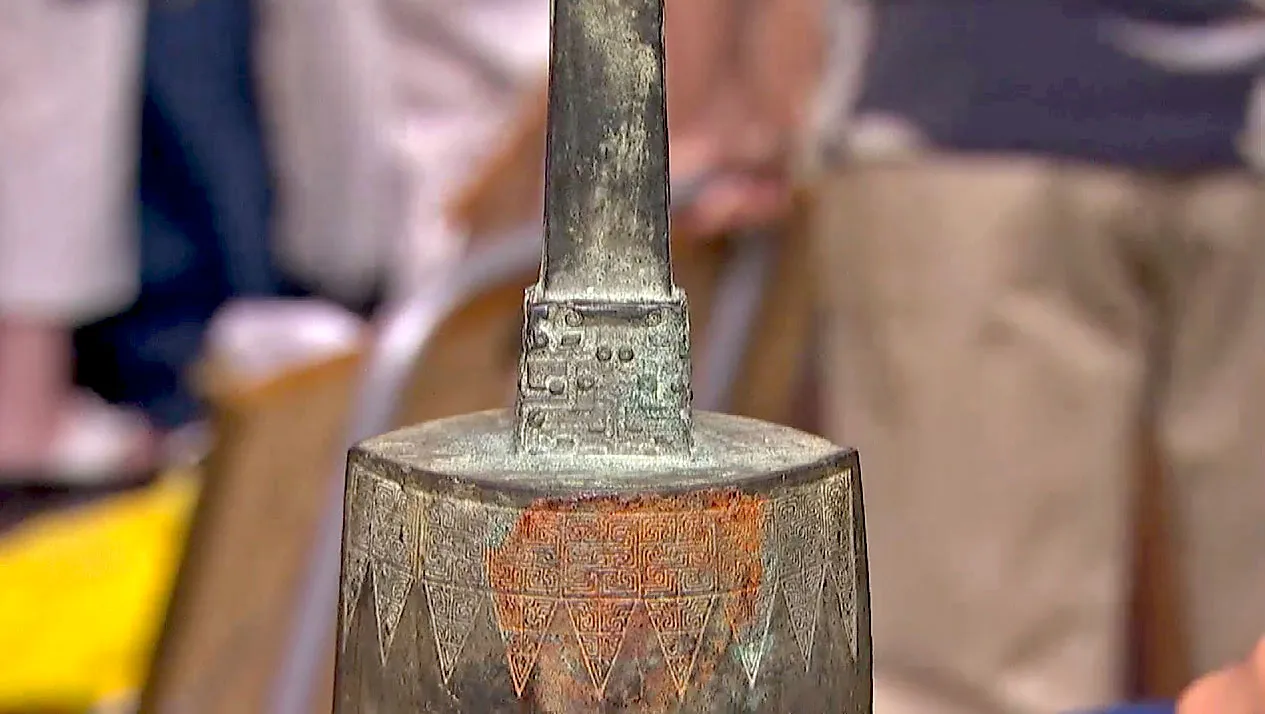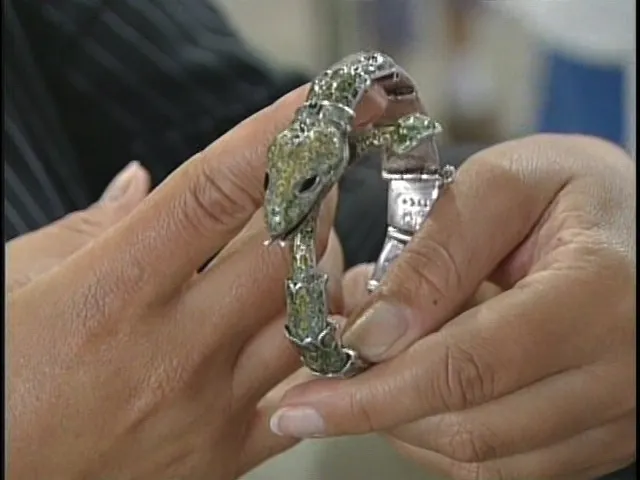GUEST: Well, what I think it is is a bianzhong, which is basically just a clapperless bell, and it may be from China, but that's about all I know.
APPRAISER: Okay, and how did you get it?
GUEST: I bought it at an auction. I paid $12 for it.
APPRAISER: $12, and was that a competitive auction, lots of hands going up?
GUEST: No, not for this object, no. I think I was about the only one.
APPRAISER: Gee, I don't know why.
GUEST: (laughing)
APPRAISER: From the style of this, one would say it would date from the Chou Dynasty. From the style. I'm not telling you if it's right or not yet.
GUEST: Right, okay.
APPRAISER: Which is, Chou Dynasty is 1046-256 B.C. And when you look really closely, you'll see a series of cracks. And what that indicates is that the metal has undergone a chemical change. So it's kind of reverting back to the composite materials that make up bronze. And in fact, there's a small area here... This is called bronze disease. So the green, the discoloration you see is not just on the surface. It goes into the metal. And that's how we know that this is in fact authentic.
GUEST: Oh, my God, really?
APPRAISER: Yes. So it dates probably to kind of the third to fifth century B.C.
GUEST: Oh, my gosh.
APPRAISER: It is a real bianzhong.
GUEST: Yay!
APPRAISER: And you paid $12 for something that is actually worth $4,000 to $6,000 at an auction sale.
GUEST: Oh, my God, oh, wow.
APPRAISER: That's at auction.
GUEST: At auction. Wow!










